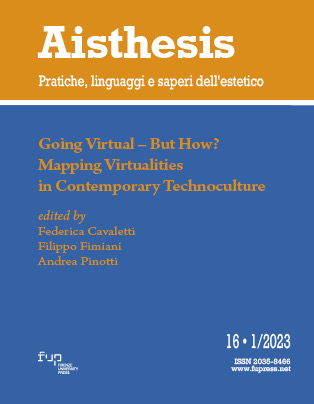Published 2023-07-22
Keywords
- virtual reality,
- geodesic dome,
- 1960s American counterculture,
- virtualization
How to Cite
Copyright (c) 2023 Margherita Fontana

This work is licensed under a Creative Commons Attribution-NonCommercial 4.0 International License.
Abstract
This paper examines the theoretical and practical aspects of geodesic dome architecture in North America as part of an aesthetic of virtualization. Geodesic domes can be conceived of as virtual environments designed as alternatives to the contemporary world and its internal crises. They were originally a tool of the American counterculture of the 1960s to search for futuristic housing solutions which responded to ecological concerns. The contribution traces some of the most important phases of dome architecture, which crossed paths with the emerging technoculture linked to the rise of virtual reality. Indeed, the idea of the dome as a means of imagining new virtual environments, as was the case of Biosphere 2, intersects with the career of VR pioneer Jaron Lanier. Today, virtual reality technologies have merged geodesic architecture with visualization devices, as happens in the case of “virtual domes”, offering a unique way to experience virtual reality and connect with others in a shared environment.

